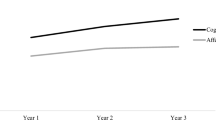Abstract
The philosophy of Bruner transcends traditional boundaries in the study of the human mind with a new kind of psychology, one that frees the thinking mind from its opposition to feelings and also from the limitations of being considered an ‘inside-the-head’ phenomenon. It is with active engagement with the outside world that a child develops its understanding. In this engagement with the outside world, the developmental construction of thought is actively created through the use of symbols. The cultural context, images, and languages a person experiences are thus considered to be formative in thinking. Opposing the notion of readiness, Bruner believed children to be capable of complex thought, and the dynamics of these developments were guided by meaning-making. The significance of meaning in Psychology was resurrected in his writing. Furthermore, the notion of narrative as constructive in facilitating the organisation and management of mental processes is invaluable. In this article, we bring a commentary on two articles, one that relates to the study of scaffolding of emotion regulation by parents of adolescents and the other on the narrative understanding of selfhood of individuals with autism.
Similar content being viewed by others
Notes
I do not wish to make a generalization about gender differences in discourse, this is an incidental observation
References
Brockmeier, J., & Carbaugh, D. (2001). Introduction. In J. Brockmeier & D. Carbaugh (Eds.), Narrative and identity (pp. 1–24). Philadelphia: John Benjamins Publishing.
Bruner, E. M. (1986). Ethnography as narrative. In V. Turner & E. W. Bruner (Eds.), The anthropology of experience (pp. 139–155). Chicago: University of Illinois Press.
Bruner, J. S. (1990). Acts of meaning. Cambridge: Harvard University Press.
Bruner, J. S. (2001). Self-making and world-making. In J. Brockmeier & D. Carbaugh (Eds.), Narrative and identity (pp. 25–38). Philadelphia: John Benjamins Publishing Company.
Chaudhary, N. (2004). Listening to culture: Constructing reality through everyday talk. New Delhi: Sage.
Demuth, C., Chaudhary, N., & Keller, H. (2011). Memories of me: Comparisons from Osnabrueck (Germany) and Delhi (India) students and their mothers. Integrative Psychological and Behavioural Sciences, 45(1), 48–67.
Fasulo, A. (2019). A different conversation: The autistic self and narrative psychology. This volume.
Feldman, C., Bruner, J., Kalmar, D., & Renderer, B. (1993). Plot, plight, and dramatism: Interpretation at three ages. Human Development, 36, 327–342. https://doi.org/10.1159/000278220>.
Geertz, C. (1973). The interpretation of cultures. New York: Basic Books.
Hymes, D. (1996). Ethnography, linguistics, narrative inequality: Toward an understanding of voice. London: Taylor & Francis.
Salvatore, S. (2019). Beyond the meaning given: The meaning as Explanandum. This volume.
Tuli, M. (2014). Parental reconstructions about the care and development of young children. In N. Chaudhary, S. Anandalakshmy, & J. Valsiner (Eds.), Cultural realities of being: Abstract ideas within everyday lives. USA: Routledge.
Valsiner, J. (2014). Revealing the abstract in the concrete: Why India is our future? In N. Chaudhary, S. Anandalakshmy, & J. Valsiner (Eds.), Cultural realities of being: Abstract ideas within everyday lives. USA: Routledge.
Author information
Authors and Affiliations
Corresponding author
Ethics declarations
Conflict of Interests
Author A declares that he/she has no conflict of interest. Author B declares that he/she has no conflict of interest.
Animals
No animals were used or mentioned.
Human Subjects
No human subjects were involved in the preparation of the article.
Additional information
Publisher’s Note
Springer Nature remains neutral with regard to jurisdictional claims in published maps and institutional affiliations.



